
Music has always provided emotional enhancement to the accompaniment of verse. Musical instruments and their variations have time and again acted as weapons of subtle expression in times of turbulence. One such instrument is the Cornet. A Cornet is the modified version of the trumpet but with a mellow tone and pitch. It belongs to the brass family of musical instruments. As in all brass instruments, sound is produced in a Cornet by sympathetic vibrations of air in a tubular resonator. Brass instruments such as the Cornet are highly directional and most of the sound produced travels straight outwards from the bell. Though difficult to record such notes, they play a major role in performance situations such as in marching bands. Recently being replaced by the trumpets, Cornet plays a specific role and has been an essential part of concert bands.
Cornets are a result of continuing refinements of the tapering horn upon which sound could be produced by blowing on end, as on a cup–shaped mouthpiece. The earliest example of the ancestor of the modern day Cornet is the ancient Hebrew shofar instrument. In the 14th century England, a wooden, conical leather–covered musical instrument with six finger holes was designed and called the ‘cornetto’ from which its name is derived. Though it had a crude mouthpiece, it was extremely popular during the 15th and the 16th centuries. Cup or bell–shaped mouthpiece instruments made considerable advances and tone holes were covered or replaced by keys. Around 1815, piston valves began to replace tone holes and the Cornet was evolved, retaining its characteristic, mellow sonority and singing tone.
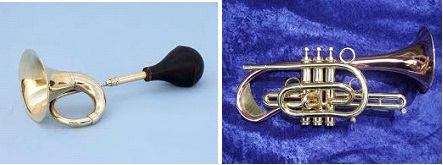
The Cornet is a brass wind instrument and makes a sound when the player vibrates or buzzes the ‘lips’ in the mouthpiece, creating a column of vibrating air in the tubing. The frequency of the vibrations of the air column can be modified by changing the lip tension and aperture or ‘embouchure’ and also by altering the tongue position. This act changes the shape of the oral cavity, thereby increasing or decreasing the speed of the air stream in the tubing. Double or triple tonguing is also possible. The valves help to lengthen the column of air, which lowers the pitch and a mellow sound is produced. Additional valves help in playing the Cornet chromatically.
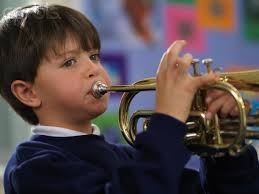
The components of a Cornet are mouthpiece, valves, bell, main tuning slides, water key, valve slides, lead pipe and the finger hook. The components of the brass instrument of Cornet can be made of wood or any other metal.
The brass instruments such as Cornets are made from brass, gold and silver and most commonly from yellow brass, which is an alloy of copper and zinc. The manufacturing process involves the collection of the main tube, bell, valves and the assembly. First, the main tube or the pipe of the instrument is manufactured from machinable brass that has been moulded into a pole–shape, tapered and lubricated. It is then cast into a doughnut–shaped die and tapered. The bell or the mouthpiece is made from a brass sheet using a pattern and the cut sheet is hammered around a pole. The ends of the tube are joined into butt joint and lap joint. The bell is soldered to the main tube. The valves, slides and keys and other accessories are given an acid wash. The instrument is then assembled by soldering the tubes, valves, slides, valve caps and finally the mouthpiece is inserted in the main tube.
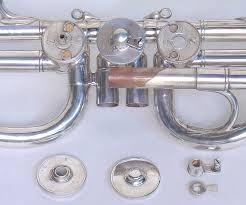
Cornet is basically a brass instrument known for its mellow tone, which is widely used in orchestras, fanfare orchestras, concerts, bands and jazz. The Cornet’s first appearance may have been in Rossini’s opera in 1829. The instrument has been used by well known composers in their symphonies and concerts in the earlier centuries. Today, the Cornet is chiefly used in brass and military bands where a Soprano Cornet is used. Some composers use the Cornet where they want its particular tone quality in the symphonies.
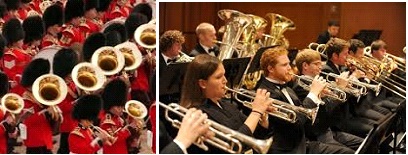
Some of the important types of Cornet include:
- Soprano or Eb Cornet is played a fourth octave above the standard Bb Cornet.
- Bb Cornet is the standard instrument used in concertos.
- Echo Cornet is not in use any more.
- Short model traditional Cornet called Shepherd’s Crook with a rich mellow sound is usually preferred by a traditional Cornet player.
Long–model Cornet played in concert bands in the US.
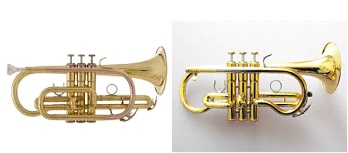
Traditional Cornet players include Ernest Williams, Jean–Baptiste Arban, Joe King Oliver and the most well known jazz artist and Cornet player Louis Armstrong. Modern Cornet players are Bobby Bradford, Phillip Cobb (Salvation Army), Roger Webster and Bill Taft.
Beginners may learn to play Cornet in 12 weeks, few months, a year or more than a year. There are many music schools in UK, USA, Germany and other countries that teach the basics of Cornet. Vander Cook College of Music in US and Royal Northern College of Music in UK are notable for teaching wind and brass instruments. Learning of Cornet involves the following steps:
- Eject and place the mouthpiece between the lips and buzz on it.
- Replace the mouthpiece and place the 1st, 2nd and the 3rd finger on the respective key and hold the valve with the left hand.
- On getting a proper hold, buzz on the mouthpiece again. A note is produced, C.
- Buzz again with tight lips and press the valves, a D note is produced.
- Repeat by loosening of the lips. E, F, G and C low notes are produced.
- Moving the tongue over the roof of the mouth to produce a low note of C.
- Buzz once again but after the tongue movement, before playing a note. Repeat.
G Kowledge of | 0 Comments >>
0 Comments
Leave Comment
Your email address will not be published. Required fields are marked.